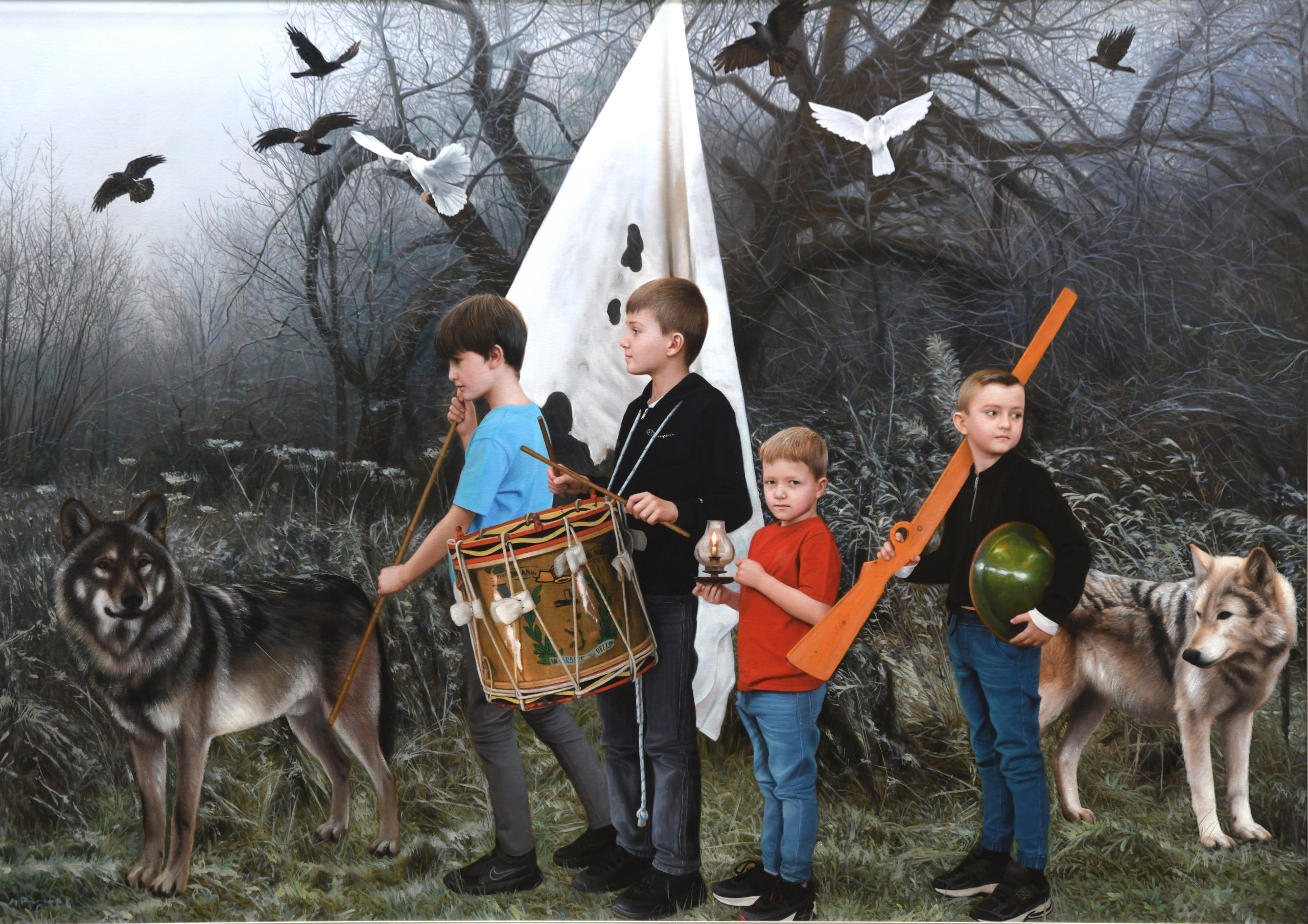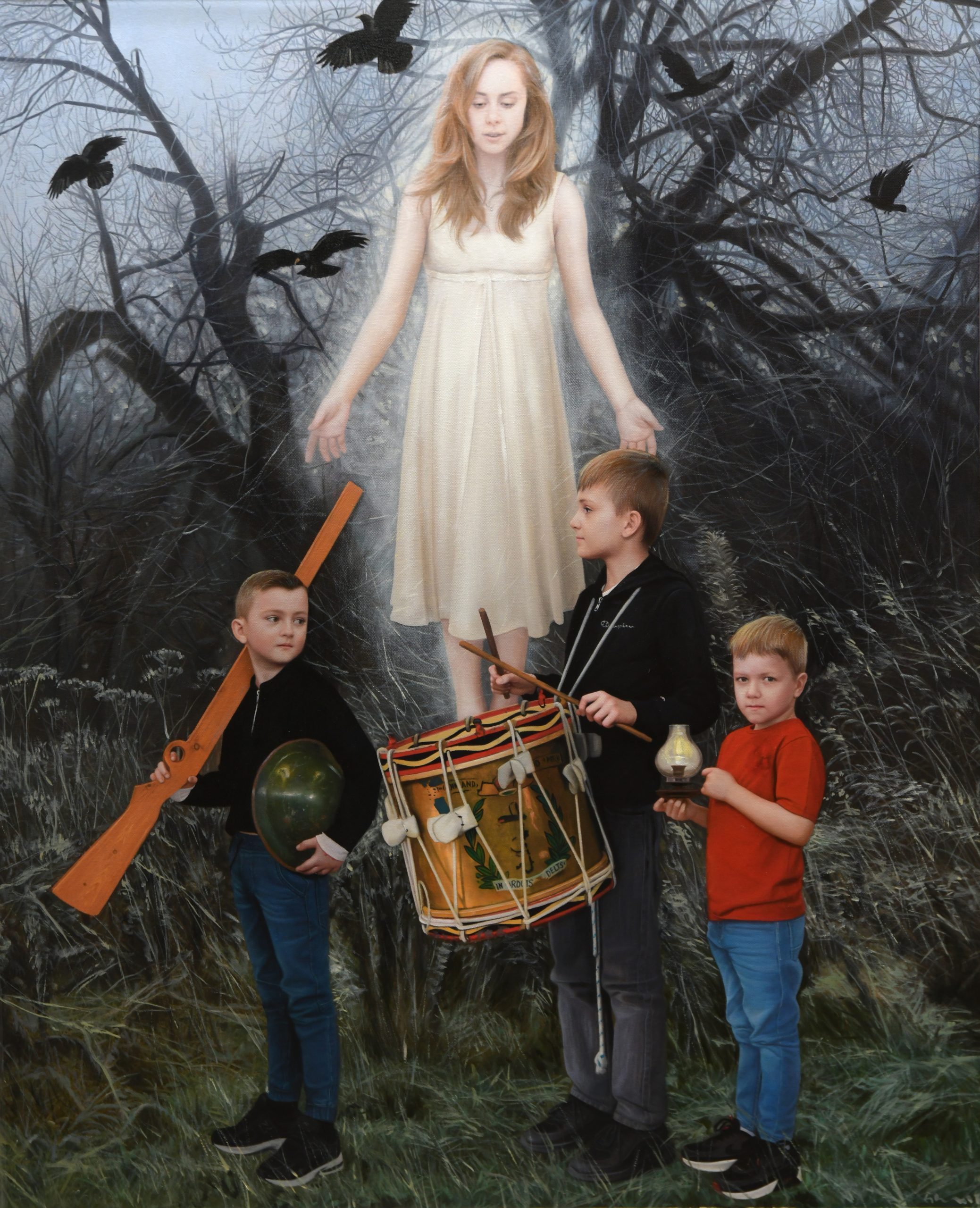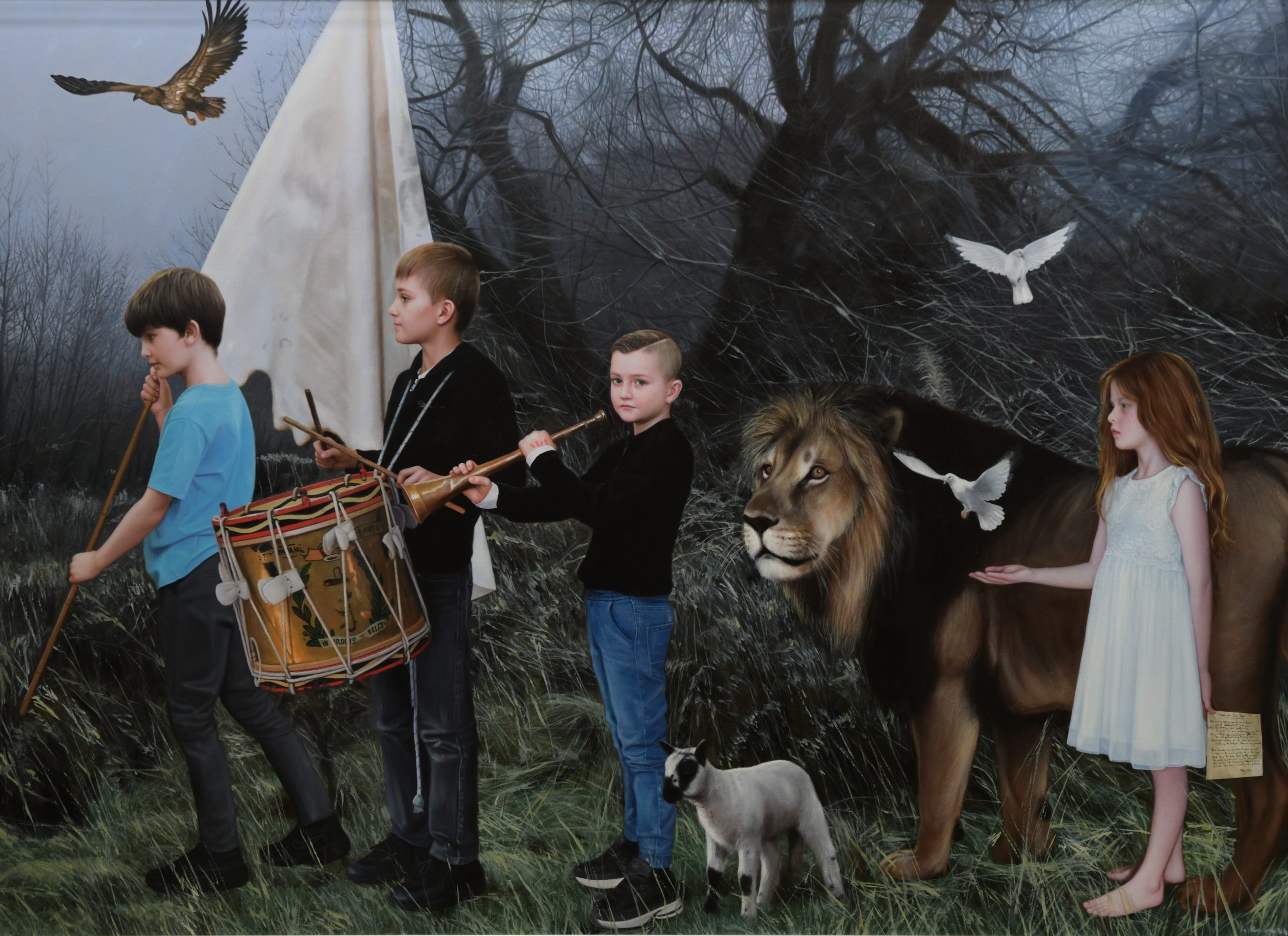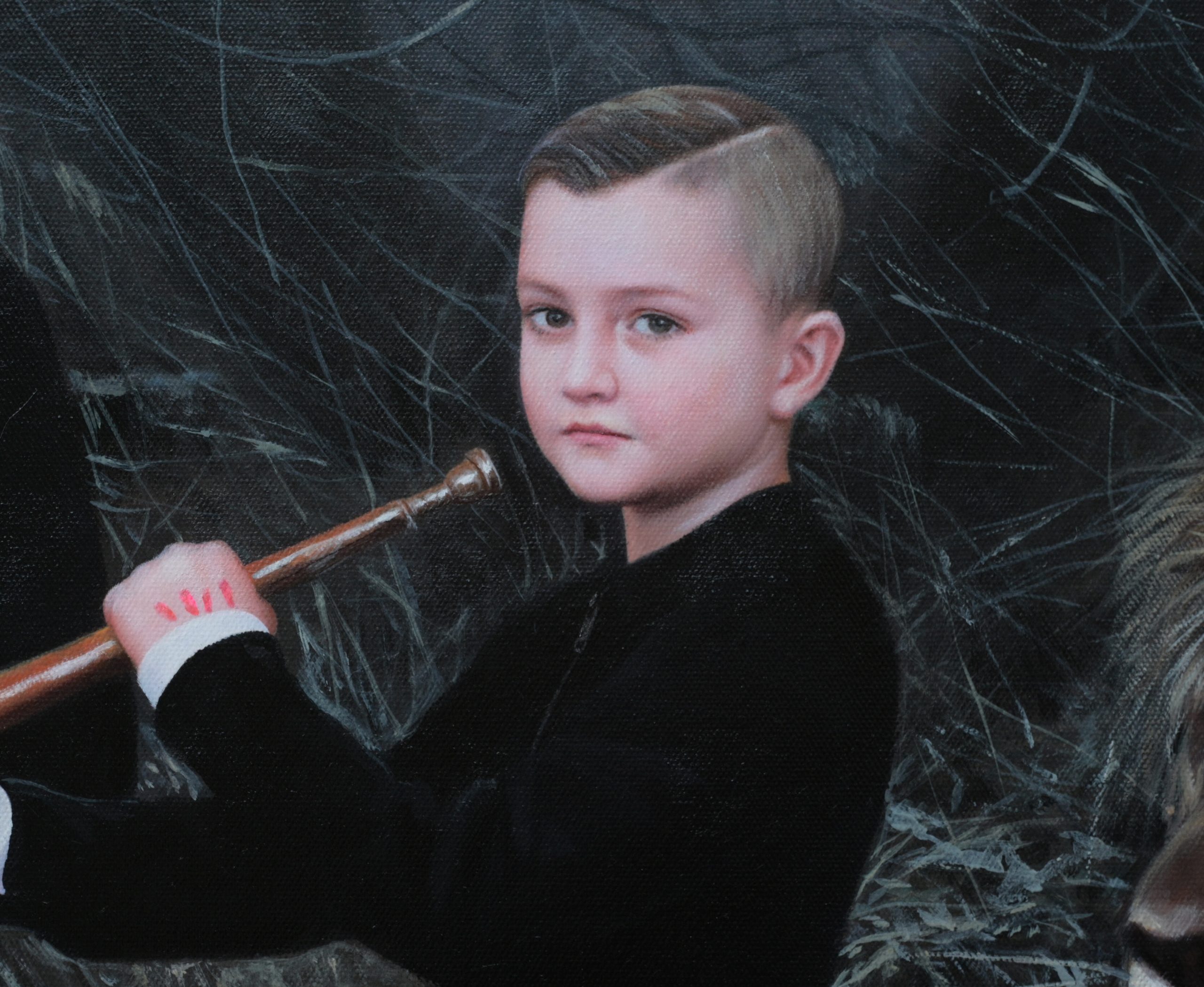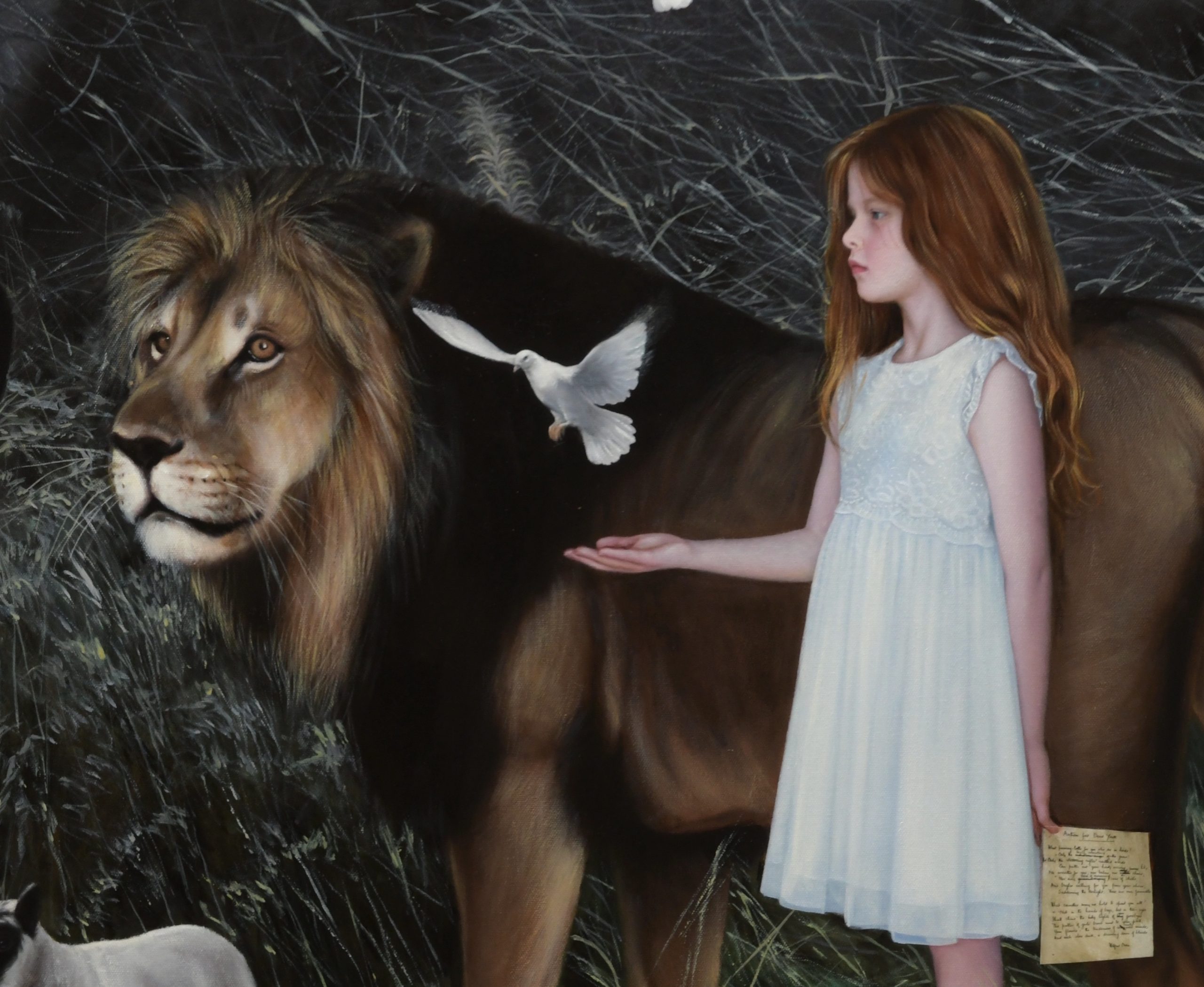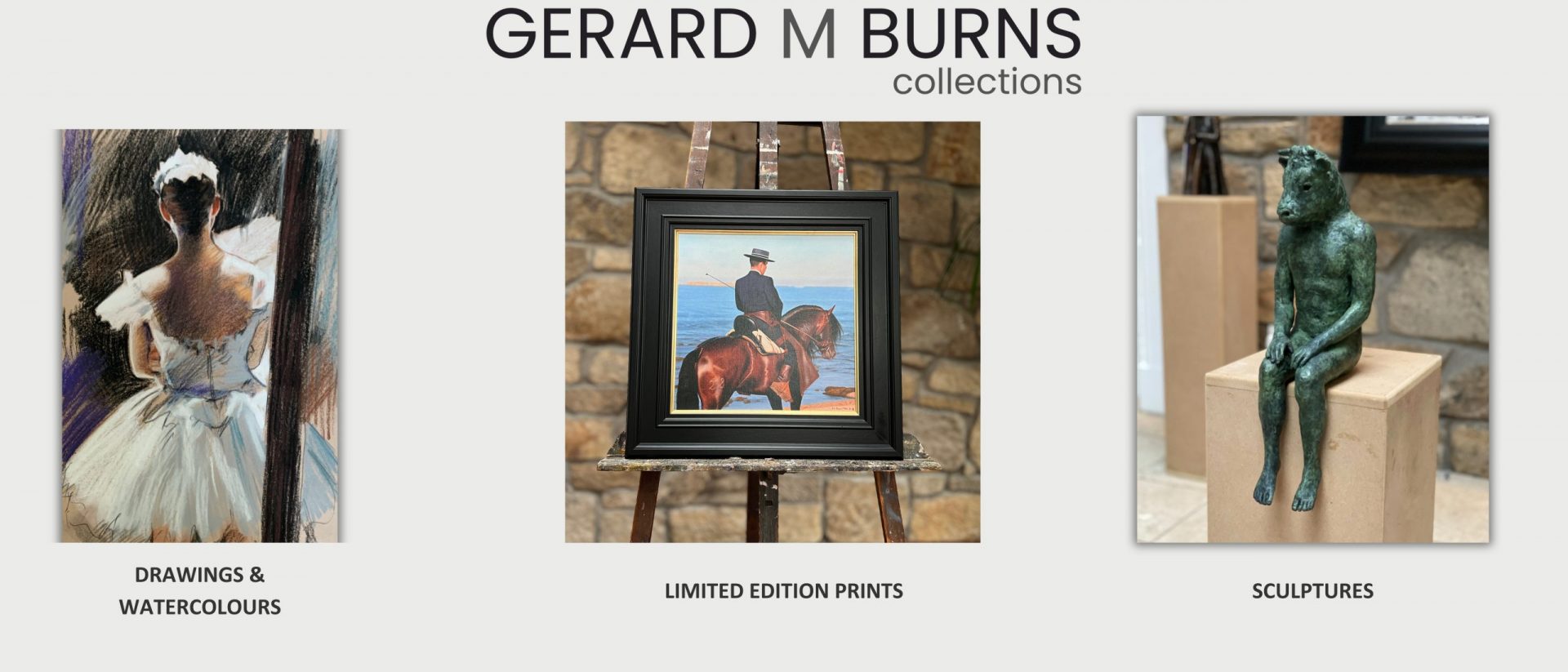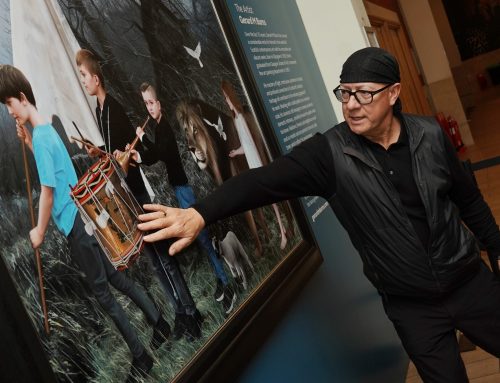The War Requiem
Britten’s War Requiem has been a source of inspiration for my work since the very earliest days. In the early 90s I produced a series of canvases inspired by this piece of music, one of which “Anthem” I would still regard as a key work in terms of my early development as an artist.In 2023 as a result of a proposed collaboration with the Royal Scottish National Orchestra, I was presented with an unexpected opportunity to revisit the theme.
This resulted in a set of three new canvases.
Britten, a prominent 20th-century English composer, created the War Requiem as a response to the horrors of World War II. Premiered in 1962, the Requiem intertwines traditional Latin Mass for the Dead with the poetry of Wilfred Owen, a World War I soldier and poet. This fusion of sacred and secular elements conveys a powerful anti-war message, making it a seminal work in Britten’s oeuvre.For those not familiar with it, its arguably not the easiest piece of classical music to get to grips with. Unlike many other pieces of music based on the theme of war it is totally devoid of any triumphalism, and is instead a stark and brutal response to the futility and terrible waste of life during that terrible war. Owens’ poems as much as the music itself were what drew me to the piece all those years ago, and once again these would be the pillars upon which these new artworks would be based.
Determined not to simply repeat what I had done back in the 90’s, I embarked upon what would this time be a much more austere and atmospheric response. Placing children once again at the heart of the composition, however this time the bright colours of their clothing are set against a stark winter wilderness, painted almost exclusively in tonal shades of black white and grey.Finding myself pulled in several different directions with regard to the symbols I wanted to include in the artwork, what had originally been planned as a single artwork became three separate paintings. These three paintings were created sequentially, and as such each would comfortably exist in their own right. However its clear that they are much more powerfully received as a triptych, each panel telling a slightly different story, but combining to create one single artwork.
The Anthem Triptych
Inspired by the RSNO, for the RSNO
(Transcribed for the hard of hearing)
I came in to meet with Jenny and Alistair Mackie really on the basis of well, yeah this sounds exciting… What are we going to do? And I’m not sure at what point in the conversation it was mentioned that rather than actually paint the orchestra, which was my initial idea, perhaps we could base something on a piece of music. This led to an invitation to come along that weekend, when the orchestra were performing Benjamin Britain’s War Requiem”. At this point I thought “okay, the universe is doing its job here”, because the War Requiem is a really pivotal piece of music in terms of my development as an artist. I had made a series of paintings in the late 90s based on the War Requiem, it was almost the gateway to what has become my mature style as an artist and the first time that I took abstract elements and brought together a narrative on a canvas rather than simply producing something which was representational. So the chance to revisit that piece of music after all those years, I thought “this is completely perfect”.
We then had a question of the timing because this was the Wednesday, and the performance was on the Saturday, so Alistair gave me permission to be present at the rehearsals.The rehearsal was quite mind blowing – I suppose I maybe shouldn’t have been that surprised. But the forensic nature of how the music was dissected, phrase by phrase, is actually very similar to the way that I make paintings. Where people will say “how can you make something that complicated” I would equally say when listening to a concert, “how can that be possible, how can they do that”. Getting the chance to be present at rehearsal, you understand that it’s put together inch by inch, in exactly the same way that I would actually make a painting.
What I’ve tried to do in these paintings is, first of all, not simply repeat what I did in the 90s. I have used children once again because I think the narrative is much more powerfully received when the ‘combatants’ are seen within that context. I’d not intended to make three paintings, initially I thought I would do this simply as one single artwork, but it became obvious to me that I wasn’t going to be able to say everything I want to say in one canvas. So one painting became two… and two became three. And although these were conceived of as individual paintings, I hope that it holds together – as one single artwork. I think what I’ve created is much much more powerfully received by the three paintings, and I think it’s a much more substantial statement.
This has been an incredible opportunity, it’s taken me on a journey I couldn’t possibly have otherwise imagined. All I can really say at this point is a huge thank you to the team at the RSNO for giving me this experience and for letting me be part of their world, for this short period of time.
Original sketches from the early stages of the project, with up close detail from the paintings
A small video of the installation process at Glasgow Royal Concert Hall

